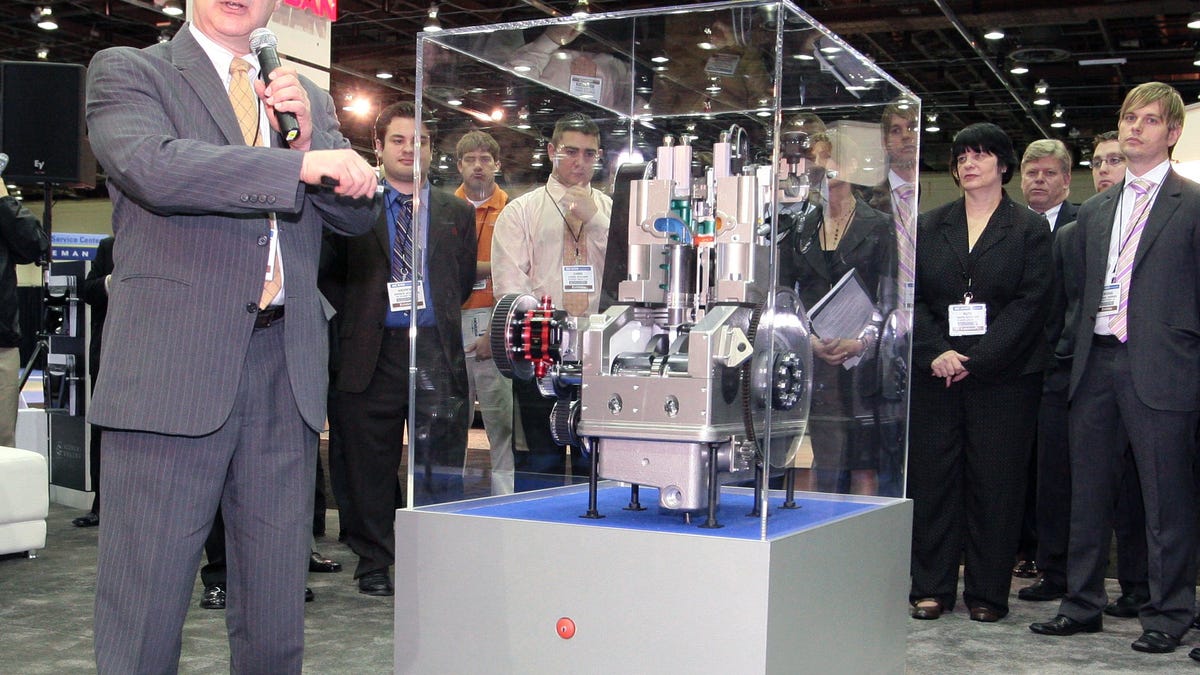New efficient engine prototype revealed
Hybrid engines aren't the only way to improve fuel efficiency. Scuderi Group unveiled a cutaway of its Scuderi Split-Cycle Engine prototype at the Society of Automotive Engineers (SAE) 2009 World Congress in Detroit.

Hybrid engines aren't the only way to improve fuel efficiency. Scuderi Group unveiled a cutaway of its Scuderi Split-Cycle Engine prototype at the Society of Automotive Engineers (SAE) 2009 World Congress in Detroit. The new design is the first major change in engine dynamics since its creation 130 years ago, says Bill Wren, representative for the family-run start-up.
Most conventional internal combustion engines operate using the Otto Cycle. The Otto Cycle uses four strokes of a piston--intake, compression, power, and exhaust--that fire in quick succession using two revolutions of the crank shaft to complete the cycle. This process is only 30 percent efficient, which means you get only 30 percent the energy contained in a gallon of gasoline.
In the Scuderi Split-Cycle Engine, the four strokes are divided over two paired cylinders--one intake/compression cylinder and one power/exhaust cylinder. On a conventional engine, the combustion occurs as the piston is going up. But in the Split-Cycle engine, the piston pair fires after top-dead center, and combustion occurs as the pistons comes down, producing more efficient, cleaner combustion with one cylinder pair and compressed air in the other.
And unlike conventional engines that require two crankshaft revolutions to complete a single combustion cycle, the Spit-Cycle Engine uses just one. It's a new thermal dynamic process that produces less toxins without having to sacrifice any of the power or the torque, according to Wren.
"Because this is the first change to the internal combustion engine, it's really revolutionary," said Wren.
The Scuderi Group's naturally aspirated engine prototype is 5-10 percent more efficient than a conventional engine. But the real fuel savings will come with the next generation of prototypes. The next step for the Massachusetts-based company is to create a turbocharged version of the engine that provides more power. The third prototype will be an even more fuel-efficient air hybrid version.
Conventional hybrid engines store wasted energy as electricity in a battery. With a air hybrid engine, recaptured energy is stored as compressed air, which can power an engine and propel a vehicle. A turbocharged air hybrid engine can deliver increased efficiencies of 20-50 percent, according to the company.
The new design can be used in many applications, cars, buses, and even tractors, said Wren. But manufacturing isn't Scuderi Group's goal. The company's business model is to license the technology to the automakers, who will probably apply their own expertise to the design, gaining more power and possibly more efficiency.
Scuderi Group is in talks with 14 of the world's top-20 engine manufacturers, says Wren. Nondisclosure agreements prevent him from revealing the names of the companies, but according to an article in The Wall Street Journal, Citroen, Honda, Daimler, and Fiat have shown interest in the new design.
This video clip on YouTube explains the Scuderi Split-Cycle Engine in greater detail:

